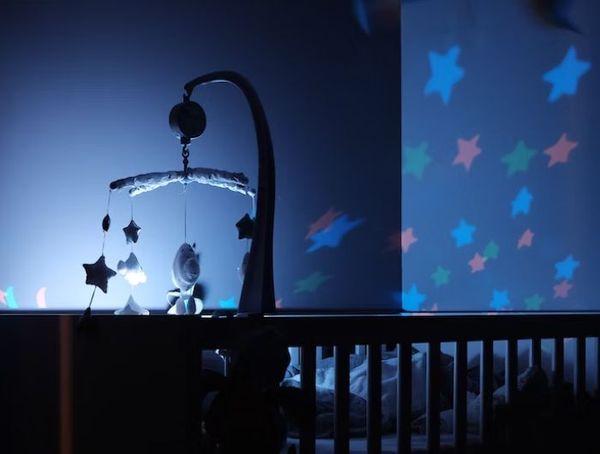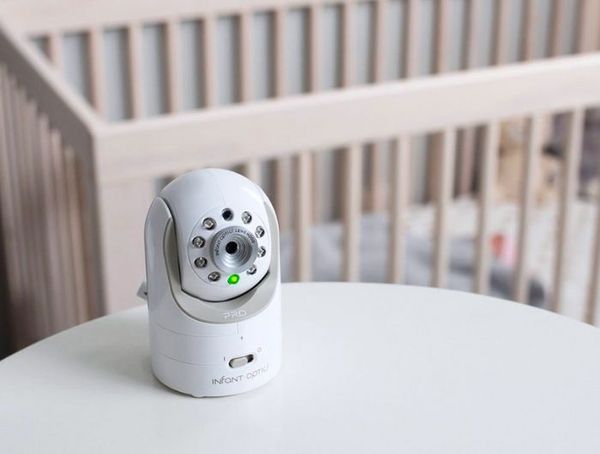In this blog post, we will explain what baby monitor radiation is, how it affects your baby, and what you can do to reduce the risks. We will also give you some tips on how to choose the best baby monitor for your needs and preferences.
How Does A Wireless Baby Monitor Work?
Wireless baby monitors use microwave radiation, which is a type of non-ionizing radiation that has a frequency range of 300 MHz to 300 GHz. Cell phones, Wi-Fi routers, microwave ovens, and other wireless devices also used the same electromagnetic frequencies. Many parents are unaware these devices emit wireless radiation.
Cell Phones and Baby Monitors
Both cell phones and baby monitors emit microwave radiation, but the exposure levels from using a cell phone are higher. According to the American Cancer Society, cell phones emit a higher level of radiation because they are held directly to the head, whereas baby monitors are positioned further away from the body. However, it's still important to take precautions when using a wireless baby monitor to reduce your child's exposure to radiation.
Analog Baby Monitor
Analog baby monitors send audio signals using lower frequency bands using non-linear, not encrypted signals. Analog baby monitors use 49 MHz to around 900 MHz frequency bands, which is lower than digital baby monitors’ frequency bands, which range from 1.8 GHz to 5 GHz.
They are safe and reliable audio baby monitors that can help you keep an ear out for your little one while you’re in another room. They are also less expensive than digital monitors. Only 10% of baby monitors in 2023 used are analog.
Digital Baby Monitors
Digital baby monitors work by transmitting signals as encrypted codes. These signals are sent through different frequencies. The receiver picks up the encrypted code and then decodes it. They use wireless systems that operate over existing household wiring.
Digital baby monitors (WiFi and non-WiFi) may be vulnerable to interference if there is another household device operating at 2.4GHz. Mostly, this includes your cell phone or wireless router.
WiFi baby monitors use internet connectivity to transmit real-time video and audio to your smartphone or tablet. They offer the advantage of remote monitoring, allowing you to keep an eye on your baby from any location.
If internet reliability is a concern, non-WiFi baby monitors are a solid choice. These devices operate within a specific range and do not require an internet connection. They offer a secure and uninterrupted monitoring solution.
If you are unsure which kind of digital baby monitor to choose, read our blog post comparing WiFi baby monitors to non-WiFi monitors.

What is Baby Monitor Radiation?
The radiation of a baby monitor is the electromagnetic radiation that is emitted by wireless baby monitors. Wireless baby monitors use radio waves to send the signals from the transmitter unit (the one near your baby) to the receiver unit (the one you carry around or place in another room).
Radio waves are electromagnetic radiation, which is a type of energy that travels in waves. We can classify electromagnetic radiation into two categories: ionizing and non-ionizing.
Ionizing Radiation
Ionizing radiation is the type of radiation that has enough energy to break the bonds between atoms and molecules, causing damage to living cells and DNA. Examples of ionizing radiation are X-rays, gamma rays, and cosmic rays.
Non-ionizing Radiation
Non-ionizing radiation is the type of radiation that does not have enough energy to break the bonds between atoms and molecules, but can still cause some effects on living cells and tissues. Examples of non-ionizing radiation are visible light, infrared, microwave, and radio waves. This is used by baby monitors.
The Dangers of Baby Monitors for Babies and Kids
The effects of radiation on your baby depend on several factors, such as
- The power and frequency of the baby monitor
- The distance and duration of exposure
- The age and sensitivity of your baby
- The presence of other sources of electromagnetic radiation in your environment
According to the World Health Organization (WHO), there is no conclusive evidence that exposure to low-level non-ionizing radiation causes any adverse health effects in humans. Yet, some studies have suggested that exposure to high-level non-ionizing radiation may have some biological effects, such as.
Heating of tissues and cells
Alteration of cellular functions and metabolism
Changes in brain activity and behavior
Increased risk of cancer and other diseases
The WHO also states that children may be more vulnerable to the effects of non-ionizing radiation than adults, because they have thinner skulls, smaller heads, developing brains, and higher tissue conductivity.
It is advisable to limit your baby's exposure to radiation as much as possible, especially during their first years of life when their brain is rapidly developing.

How Can You Minimize the Risks of Radiation?
There are several ways you can reduce the risks of radiation for your baby and yourself. Here are some tips:
Go Analog
Choose an analog audio baby monitor instead of a digital baby monitor. Analog baby monitors use lower frequencies and power than digital baby monitors, which means they emit less radiation. But analog monitors may have poorer sound quality and more interference than digital monitors.
Hardwired
Choose a hardwired baby monitor instead of a wireless one. Wired baby monitors do not emit any electromagnetic radiation at all, because they use cables to send the signals. However, wired monitors may be less convenient and flexible than wireless ones.
Eco-Mode
Choose a low-emission or eco-mode baby monitor. Some wireless baby monitors have a feature that reduces the power and frequency of the transmission when the baby is quiet or asleep. This means they emit less radiation when they are not needed. However, these monitors may still emit some radiation even in eco-mode.
Space
Keep the transmitter unit as far away from your baby as possible. The closer your baby is to the source of radiation, the higher the exposure level. Ideally, place the transmitter unit at least 3 feet away from your baby's crib or bed on a nearby table or counter.
Keep the receiver unit as far away from yourself as possible. The receiver unit also emits some radiation when it receives the signals from the transmitter unit. You should avoid carrying it around or placing it near your head or body.
Find out now how to install a non-WiFi baby monitor in your nursery.
Time
It's also recommended to use the baby monitor for short periods rather than as a constant surveillance device. Noise level meters or visual monitors could be a better choice for a constant presence as they don't have the same wireless radiofrequency radiation as some baby monitors.
Turn it Of
To further minimize radiation exposure, turn off the baby monitor when you're not using it. For example, if your baby is awake and playing in the living room, you can turn off the monitor in their room.
Are Baby Monitors Safe for Your Child?
While more research is necessary to clearly understand the impact of monitor radiation on your child's health, the American Academy of Pediatrics has stated that baby monitors are safe to use.
However, it's essential to take precautions when operating these devices, particularly wireless baby monitors. Minimizing your child's exposure to radiation by turning off the baby monitor when not in use or positioning it as far away from your baby as possible are simple steps you can take to reduce their exposure.
Conclusion
Modern baby monitors offer a range of options to make parenting more accessible, and it's important to remember that risks from baby monitor radiation are relatively low. By being informed about how the technology works and using tools and resources available, you can make the best decisions for your family.
Thank you for reading Mother Bear Reviews, your favorite parenting blog!









